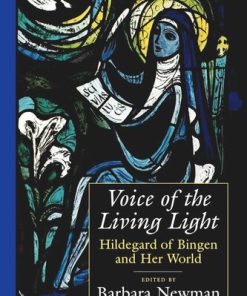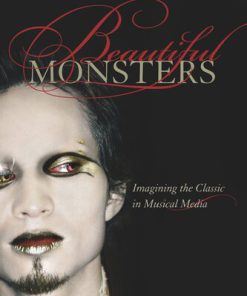Hildegard von Bingen Ordo Virtutum A Musical and Metaphysical Analysis 1st Edition by Michael Gardiner 1351974181 9781351974189
$50.00 Original price was: $50.00.$25.00Current price is: $25.00.
Hildegard von Bingen Ordo Virtutum A Musical and Metaphysical Analysis 1st Edition by Michael Gardiner – Ebook PDF Instant Download/Delivery: 1351974181, 9781351974189
Full download Hildegard von Bingen Ordo Virtutum A Musical and Metaphysical Analysis 1st Edition after payment

Product details:
ISBN 10: 1351974181
ISBN 13: 9781351974189
Author: Michael Gardiner
The Ordo Virtutum, Hildegard von Bingen’s twelfth-century music-drama, is one of the first known examples of a large-scale composition by a named composer in the Western canon. Not only does the Ordo’s expansive duration set it apart from its precursors, but also its complex imagery and non-biblical narrative have raised various questions concerning its context and genre. As a poetic meditation on the fall of a soul, the Ordo deploys an array of personified virtues and musical forces over the course of its eighty-seven chants. In this ambitious analysis of the work, Michael C. Gardiner examines how classical Neoplatonic hierarchies are established in the music-drama and considers how they are mediated and subverted through a series of concentric absorptions (absorptions related to medieval Platonism and its various theological developments) which lie at the core of the work’s musical design and text. This is achieved primarily through Gardiner’s musical network model, which implicates mode into a networked system of nodes, and draws upon parallels with the medieval interpretation of Platonic ontology and Hildegard’s correlative realization through sound, song, and voice.
Hildegard von Bingen Ordo Virtutum A Musical and Metaphysical Analysis 1st Table of contents:
1 A metaphysical medieval assemblage
Introduction
Statement no. 1: concerning the outside
Statement no. 2: concerning the role of theory as a speculative tool
Networked space and providential folds
Time and the soul
Listening bubbles
External immanence
From sound to word: the vineyard of the text
Theory as speculative response
From Augustine to Lewin, Straus, and Hanninen
Viscosity and intersubjectivity
Twelfth-century concordances with Eriugena’s ladder of being
The Ordo as object: a methodological reversal
The sound of Hildegard’s symphonia
2 Analytic introduction
Impossible ontographies
Qui sunt hi qui ut nubes
Transformation of the senses
Translation and transformation
Historical approaches to nodal segmentation
Process, extension, and emergence
Intervallic containment and commixture
A transformational analysis of Ov 3
Network diagrams
Networked perceptions
Summary: modes of becoming
3 Deterritorialized bodies
Parametric limitations of Part I
Opening perfections
The mechanics of mediation
Analytic commentary Ov 1–5
The construction of repentance as origin and path of return
Ov 3
The embodied souls
Ov 5
Ov 11
The receptacle of form
The unfolding of two series
The first series: Ov 5, 7, 9, 13, 16
The second series: Ov 6, 10, 12, 15, 18
Conclusion of Part I: Ov 20 and 21
4 The taking-place of prayer
Khora: a medievalist’s interpretation of deconstructed apophasis
Prayer as passage and the place of the other
The deconstructive forces of erōs 153
Prayer as non-discursive thought
Analytic commentary: Ov 22–28
Ov 30–39 Analytic commentary: tectonic transformations
Mirroring, transformation, passage
Second-order oscillations
Procedural summary
5 On reterritorialization
Dwelling
Medieval drama as dwelling place of the event
Spectacle and the outside-the-series
Analytic events: the spectacles of Part III
Ov 59
Ov 71
Ov 85
Conclusion: (or, internal refractions of a networked memory)
Bibliography
Index
People also search for Hildegard von Bingen Ordo Virtutum A Musical and Metaphysical Analysis 1st:
hildegard von bingen’s ordo virtutum a musical and metaphysical analysis
hildegard von bingen most famous music
what is hildegard von bingen known for
what was hildegard von bingen best known for
Tags:
Michael Gardiner,Hildegard von Bingen,Ordo Virtutum
You may also like…
Society Politics Philosophy Renaissance Modern Philosophy
Green Mass The Ecological Theology of St Hildegard of Bingen 1st Edition Michael Marder
Politics & Philosophy - Cultural
Arts - Music











